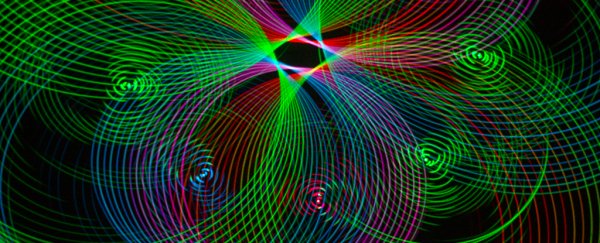String theory – or, to be more accurate, string theories – are models that attempt to explain and quantify physical properties, such as mass and charge, by describing them as vibrations on loops of 'strings'.
To create various kinds of vibrations, tension on the hypothetical string need only be loosed or tightened, which allows theoretical physicists to account for the various characteristics of a fundamental particle through just one basic factor.
The one complication for our poor brains is that these vibrations need to wiggle along nearly a dozen different dimensions to account for a particle's range of properties.
Are string theories proven?
While technically these string-based models are 'theories' in a mathematical sense, they haven't been accepted as robust physical explanations of nature since most of their predictions are currently impractical, if not impossible, to test or observe.
Still, the mathematics behind string theories combines several different concepts in a way that has many physicists convinced reality almost certainly has string theory-like features. Thinking this way, for example, allows gravity to be more easily described in quantum terms.
Since these models provide descriptions for both general relativity and quantum mechanics, they continue to attract attention as a potential solution that might point the way towards a 'theory of everything'.
Who came up with these string theories?
String theories emerged from early attempts to explain unusual activity in bonds between pairs of particles called quarks, as if they were connected by stretched pieces of string.
In the 1990s, American theoretical physicist Edward Witten identified overlapping themes in a handful of potentially correct string theories and came up with a single version consistent with all of them. It requires precisely 11 tiny dimensions, and he called it M Theory (although weirdly enough, the M doesn't really stand for anything).
It's an intriguing way to cover all our bases, but given the immense challenges involved in verifying the existence of these hypothetical, tiny dimensions, M Theory – like all string theories – will more than likely remain on the 'nice idea, shame about the lack of facts' list for a while yet.
All topic-based articles are determined by fact checkers to be correct and relevant at the time of publishing. Text and images may be altered, removed, or added to as an editorial decision to keep information current.
